There is a tiny archipelago off southern Chile’s mainland that draws thousands of people for its rugged and remote beauty, outstanding wildlife viewing opportunities and for its unique form of ecclesiastical wooden architecture. In the neighborhood of 70 chapels were first built by Jesuits priests in the 17th century and expanded upon by the Franciscans. Of the churches of Chiloé still in existence today, an impressive 16 are listed as UNESCO World Heritage sites.
The islands of this remote part of the country are small. Distances between the churches are short. Surely, we thought, it would be possible to squeak in 10 of the easier-to-reach churches in an epic day of exploration.
Let the quest begin!
Disclosure: This post contains Affiliate links.
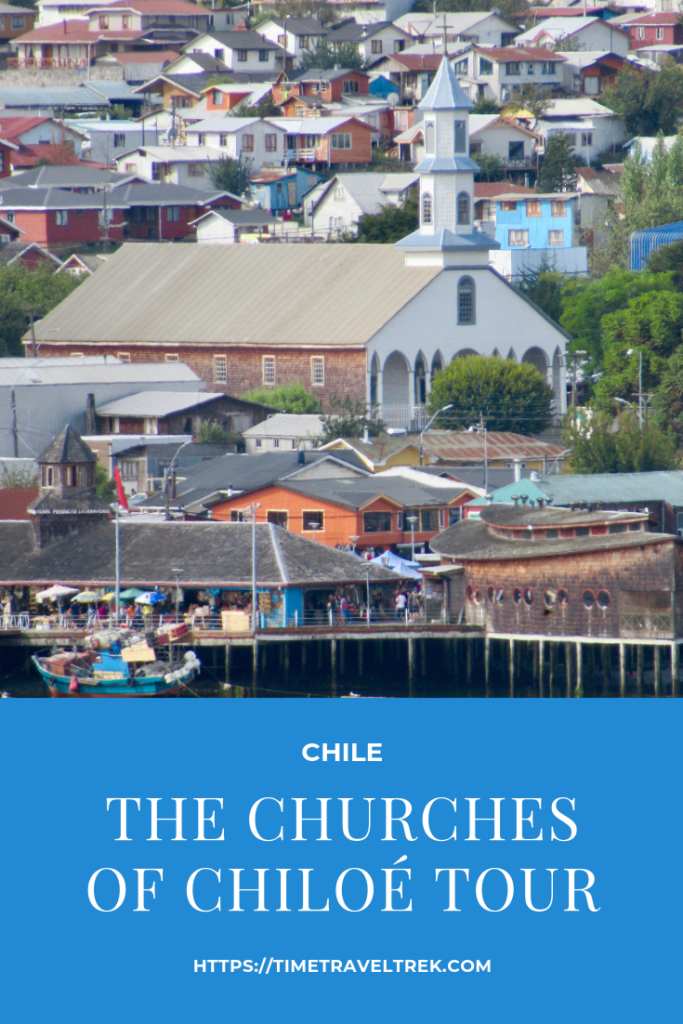
Table of Contents
First Stop: Churches of Chiloé Visitor Centre
The Centro de Visitantes de Iglesias de Chiloé in Ancud is a must-do before heading out any Chiloé church tour. The open, airy display room is filled with antique doors and windows hanging from the rafters. Historic documents, descriptions of shipbuilding techniques used to construct the churches and detailed diagrams and scale models of the churches fill in the edges of the room.
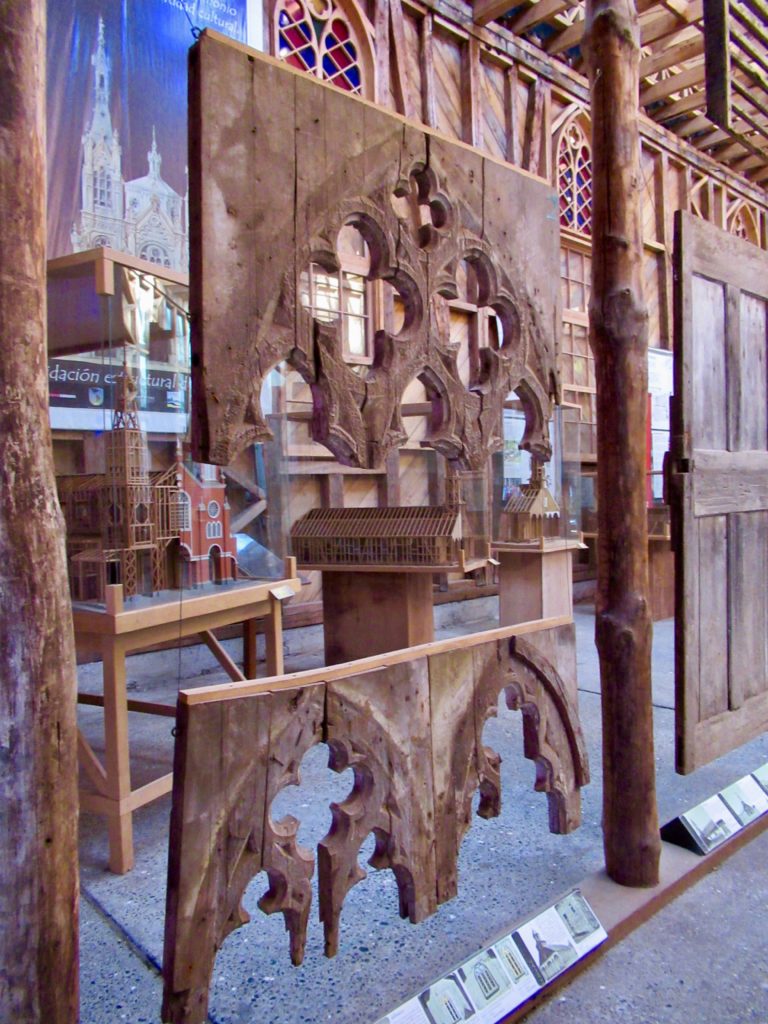
Maps show the location of the churches, most of which are near Castro. This makes sense as the Jesuits arrived on the east coast of Chiloé. The distinct style of these churches comes from the combination of building techniques from Spain and local carpenters’ wooden boat-building skills. Samples of cypress, coigue, luma and other native woods used to build the temples can be seen. Of special interest are the examples of the reinforced wooden joints and dovetails used instead of nails to hold the buildings together. As a result, it’s easy to spend an hour or more gathering insight here.
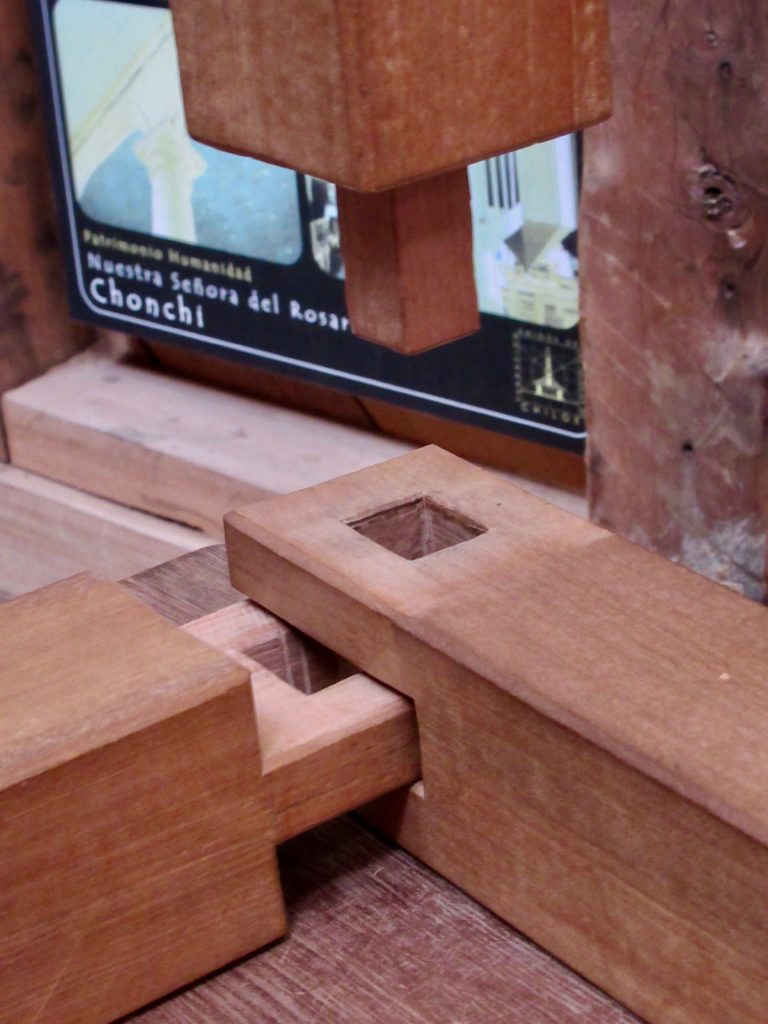
On a Quest to Find the Churches of Chiloé
Our self-guided tour saw us heading south early in the morning from Ancud along Highway 5. Using the free “Ruta de la Iglesias” handout available from the visitor, we mapped out a route starting from the north and working our way southwards. With the handout, road map, guidebooks and following the white on brown signs for each church, we were on our way. Vultures soared overhead. Caracaras sat on fenceposts along the surprisingly populated, but still rural-feeling, rolling countryside.
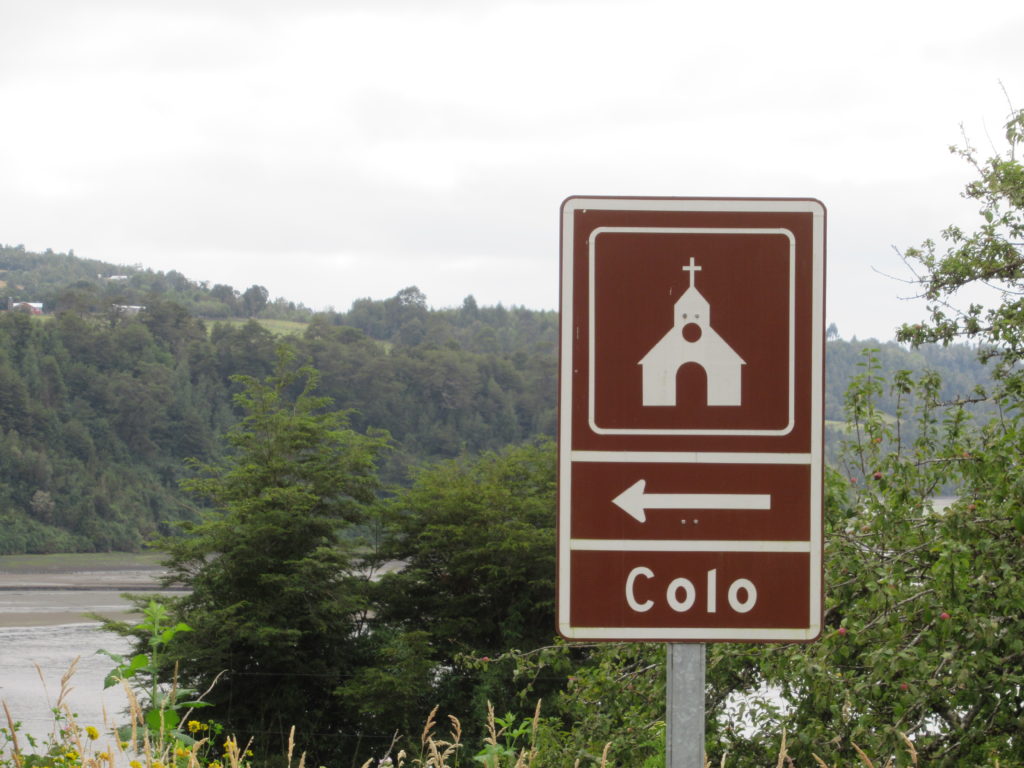
Number One – San Antonio de Colo
The small, unpainted Colo church dates back to 1785. It was rebuilt in 1890 and subsequently restored since. Typical of all the churches, Colo is clad with wooden shingles call tejuelas. Its front porch has three vaulted arches. The tower has two octagonally-shaped drums to amplify the bell. No one was around the day we visited and the front doors were locked. We made do with a peek in dusty windows and then took a seat on the front portico to absorb the peaceful atmosphere of this special place.
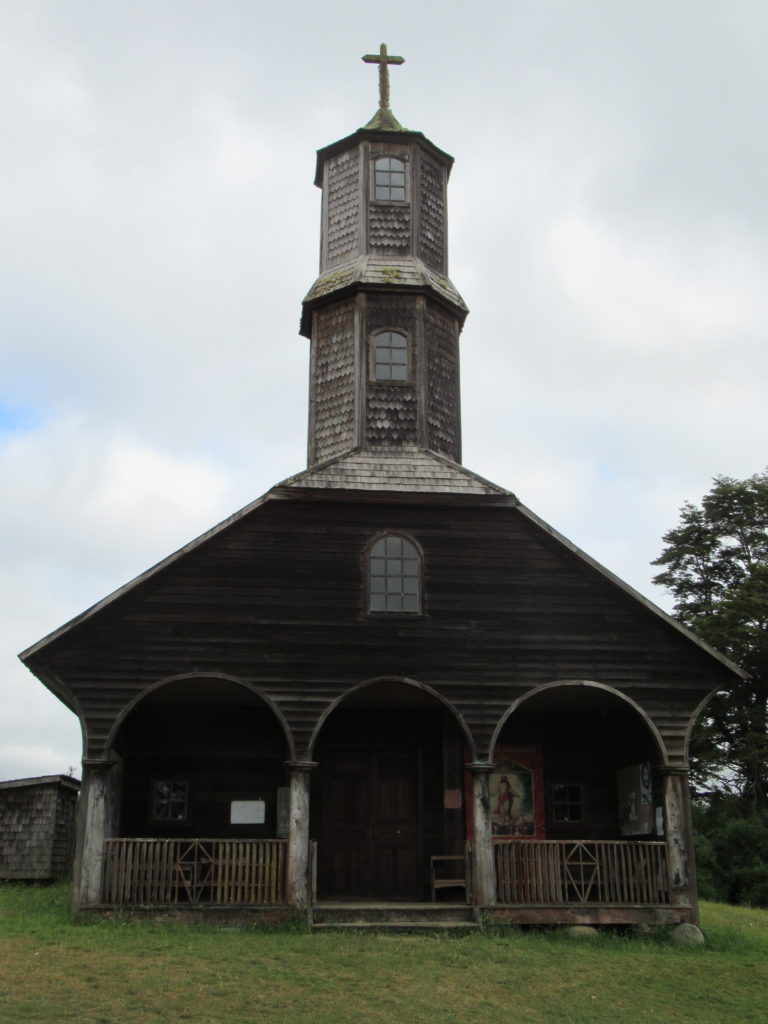
The opposite was true for Nuestra Señora Del Patrocinio de Tenaún. Dropping steeply down off the hillside into the town, the church’s three, bright blue towers and red roof stand out above the sea. Arriving just before a tour bus, we wandered inside the immaculately restored church ahead of the crowds. The original chapel was built in 1734, but the Tenaún church was constructed in the early 1800s. The majority of the churches were built on higher ground, both to act as beacons for navigation and to prevent flooding. We took time to build a quick lunch with fixings from the cooler and and sat on a bench in the park in front of the church before heading out – so many churches left to see, so little time!
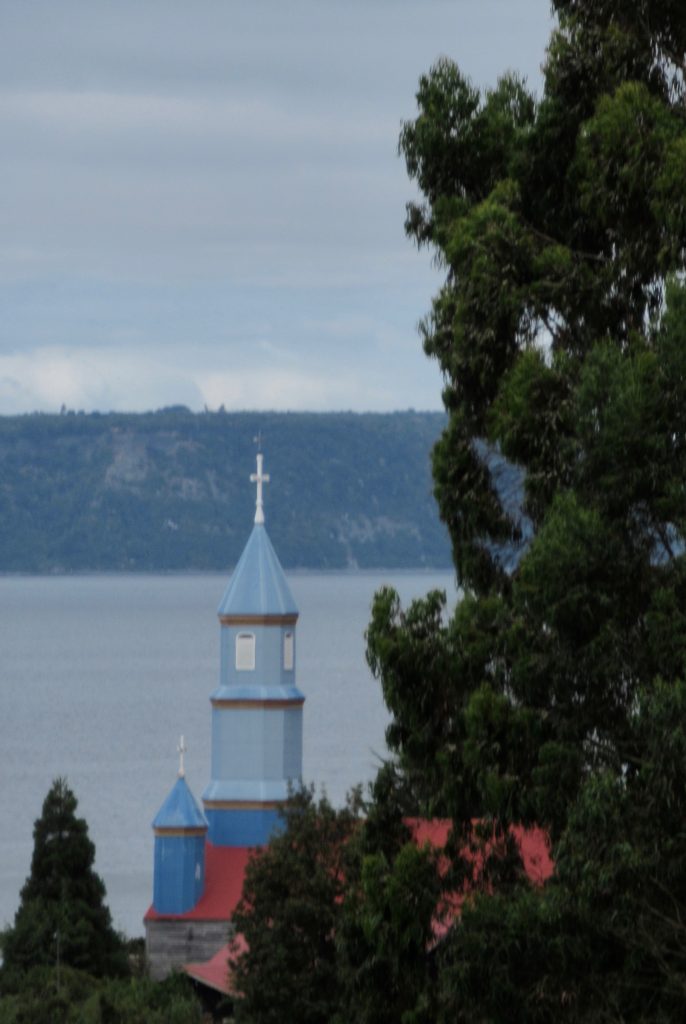
Take Me to Church
It was a little drive off the main road, but San Juan Bautista de San Juan was perhaps one of the most interesting churches we visited. Interesting, not only for its weatherworn beauty and character, but for its location across from a working shipbuilding yard. Being able to see the craft in process was captivating.
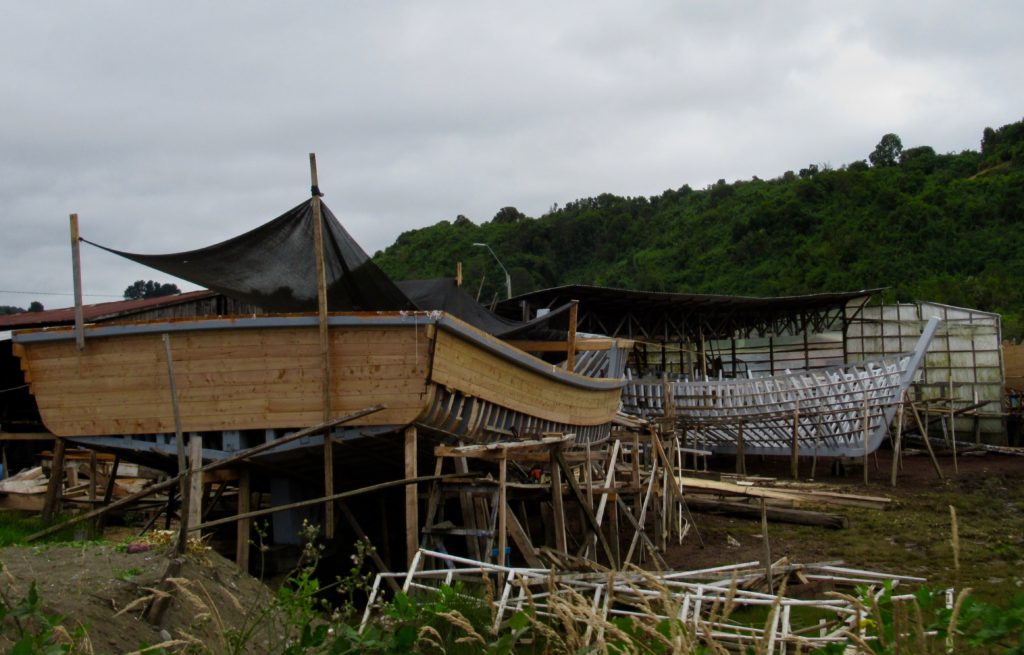
The church itself is younger than many of its counterparts, with the chapel originally being built in 1833. A small group of three local teens welcomed us in and practiced a handful of English words with smiles. We could have easily stayed longer.
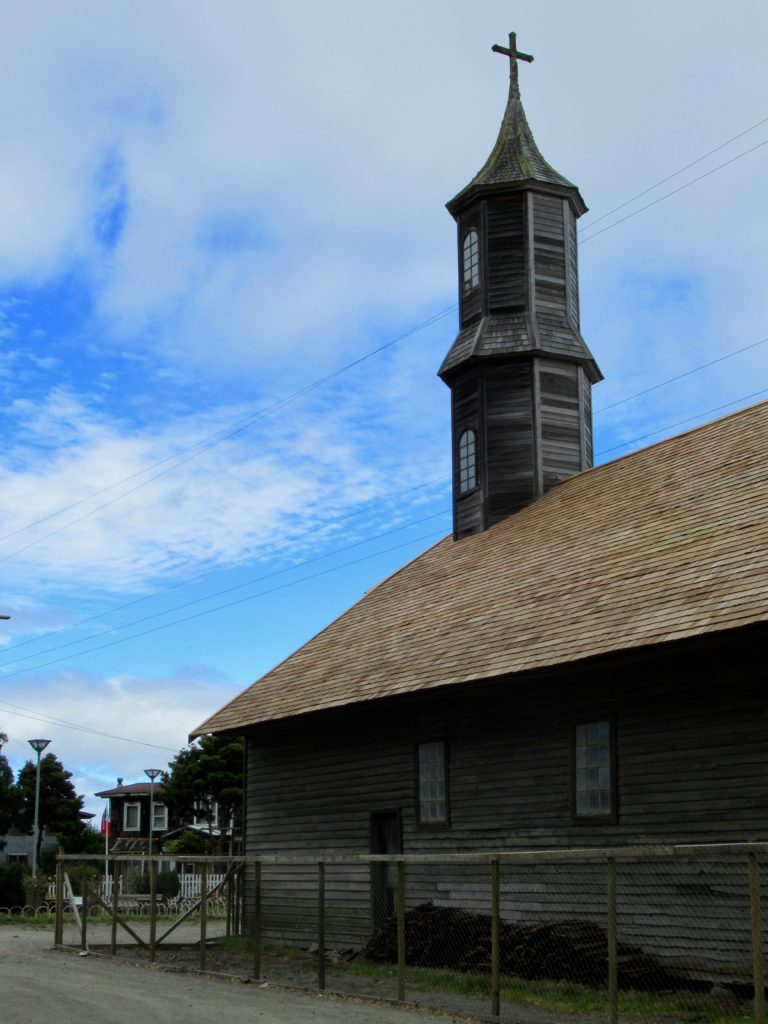
Nuestra Señorade los Dolores de Dalcahue, on the other hand, threw us for a loop when we thought we were doing so well. The signs became less obvious as we approached the largest of the towns we’d visited so far. Traffic became a grid-lock and an unplanned right when we should have turned left had us shaking our heads and wondering “now what?”
Horns honked and we inched forwards. Thinking we would just give Dalcahue a pass, we lined up for the short ferry ride from Isla Grande over to Quinchao Island. Hopping out of the car for a quick look around, there it was, standing out as a beacon among the congestion of the city. No, we didn’t get to experience Dalachue church in person, but we did manage to snag a beautiful picture looking back from the water!
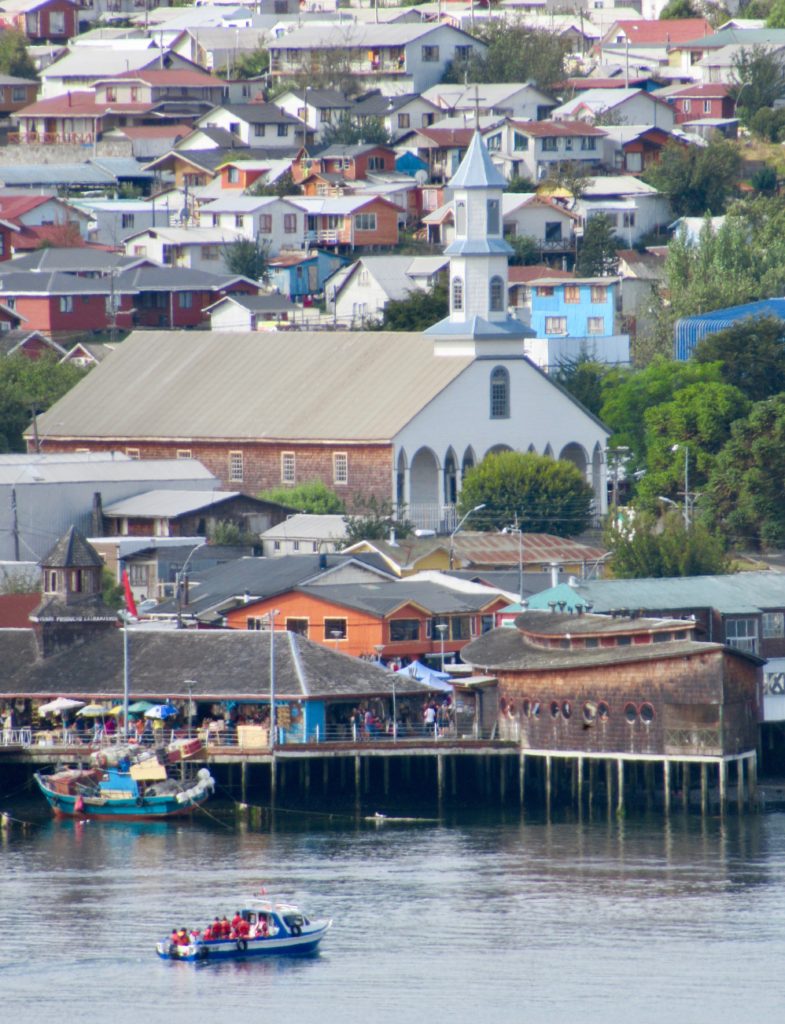
Isla de Quinchao
Santa Maria de Loreto de Achao is considered to be one of the oldest remaining churches. Construction began in 1730 and continued over time. Each church we visited had similarities and each one also had sometime completely different than all the rest. Achao caught our attention with its intricate wooden ceiling detail.
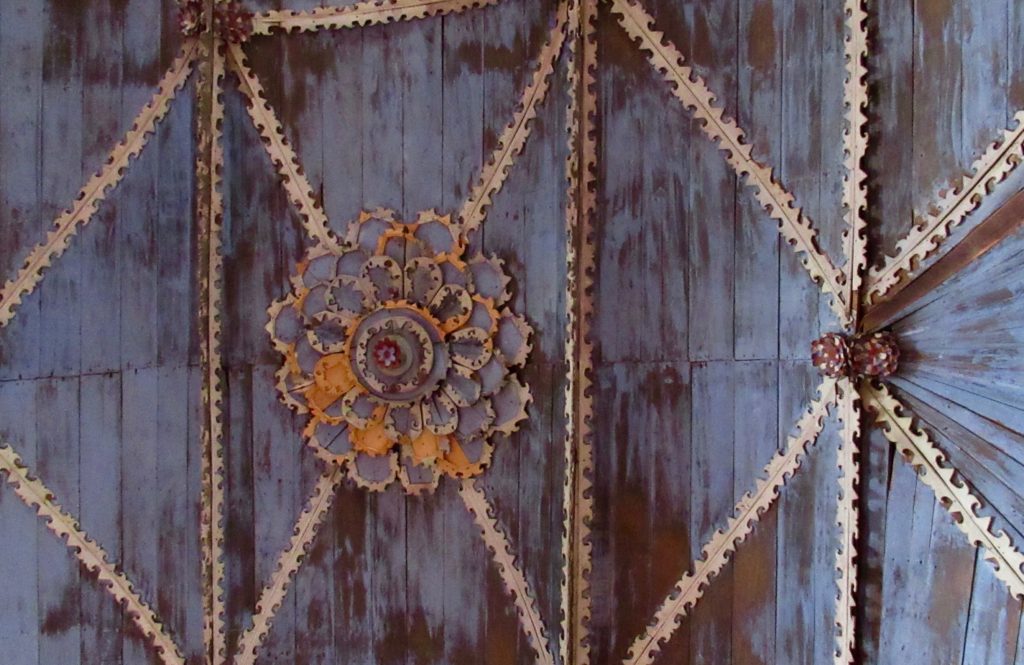
Quinchao has the largest of all of Chiloé’s churches. Nuestra Señora de Gracia de Quinchao was originally built in 1880, it was rebuilt in 1960 after a massive earthquake.While somewhat busy when we arrived, it seemed to be mostly locals and independent travellers rather than large tour bus groups. The wide, open esplanade is used for ceremonies and religious festivals, both in the past and present-day.
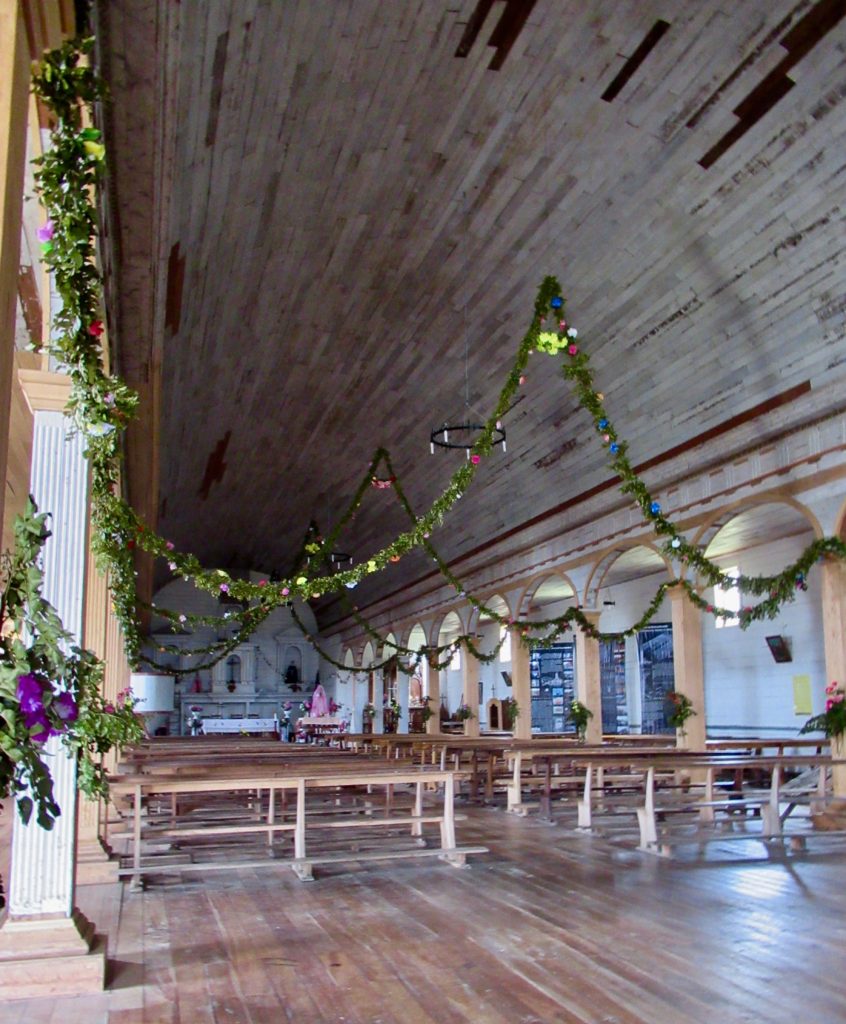
Heads are spinning from all we’ve experienced so far, but our quest is done for the day. We still have to get back to Isla Grande, drive down past Castro and reach our hastily booked accommodation for the night!
Hasta mañana.
Day Two of the One Day Tour!
Our first stop this morning was the delightful Nuestra Señora del Rosario de Chonchi. Located across the Plaza de Armas in the small town bearing the same name, Chonchi church has a commanding presence on the hillside overlooking the water. Taking the outside in, stars are painted on the church ceiling. A small Jesuit chapel was built on this site in 1767. Today’s temple was built in 1893. The tower collapsed in a storm in 2002 and was rebuilt. The battle against the elements and age is ongoing with all of the churches.
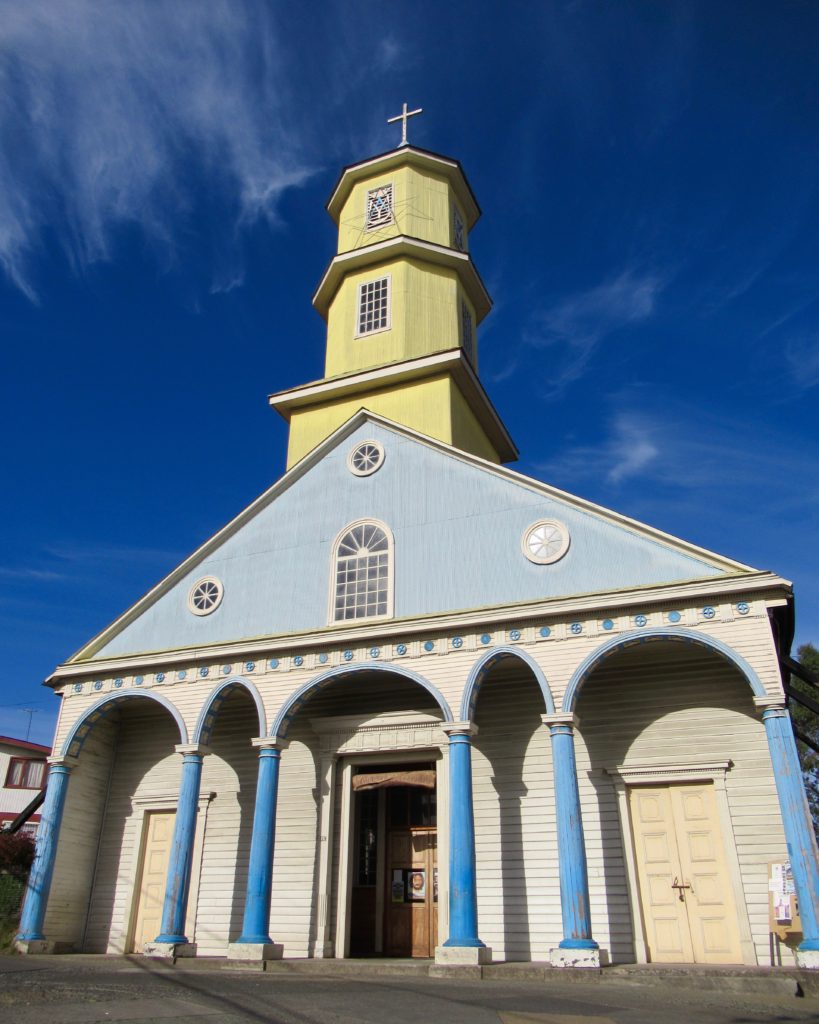
(Photo: Megan Kopp)
San Antonio de Vilupulli was a short drive off the main highway. Vilupulli has a tall, slender tower and was used as a lighthouse in the past. The setting is pastoral an impressive view overlooking the sea. Locked and weathered, with no posters on the portico message board, we wondered if it was still in use today.
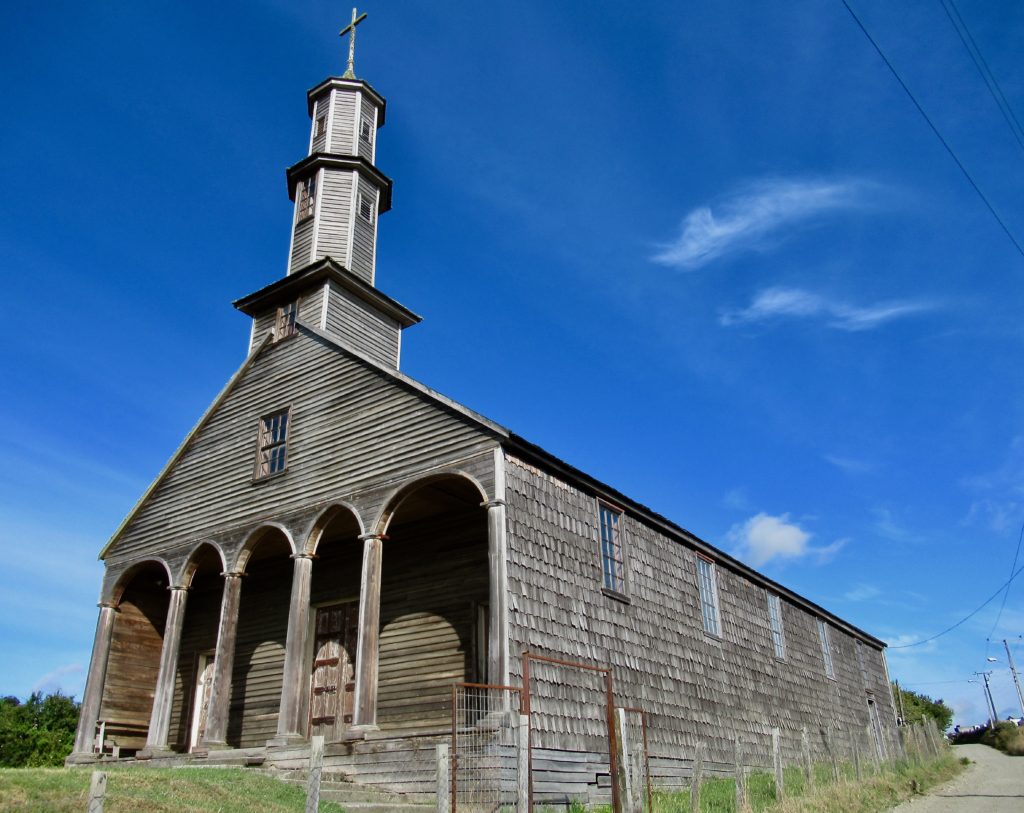
Nuestra Señorade Gracia de Nercón sits high on a hill above the sea and appeared to be slightly off the tourist route. A massive ornamental shrub maze fills the original esplanade. Sturdy posts shore up the building along the sides. Locked, we had to use our imaginations to see the interior columns painted to resemble marble.
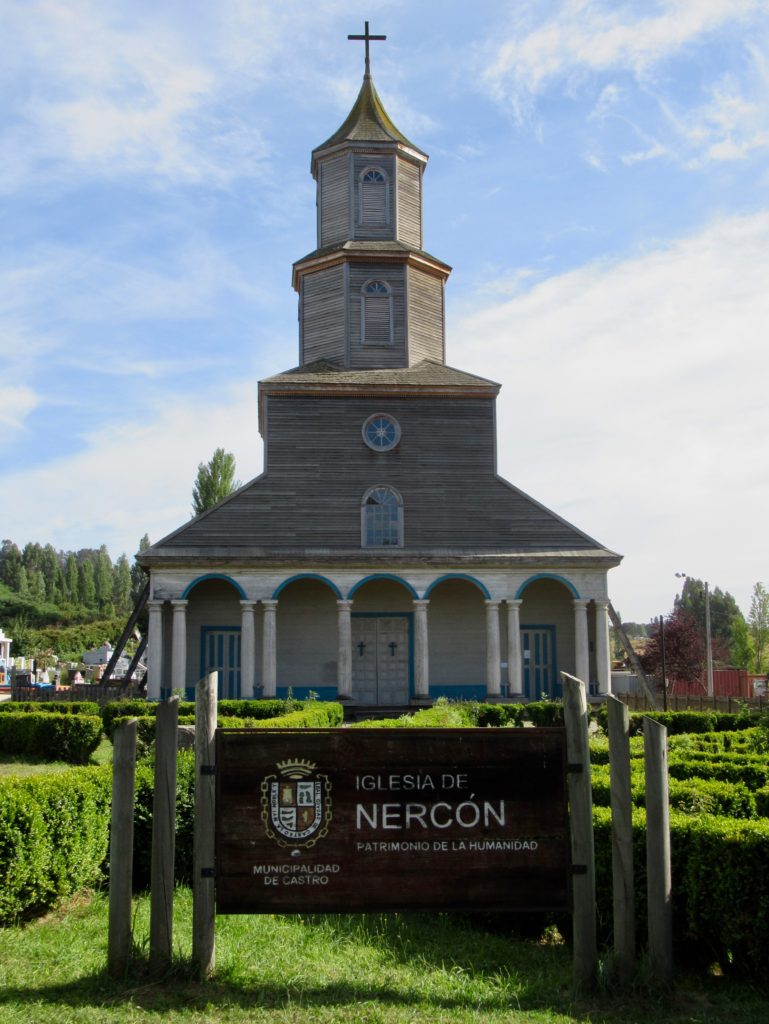
Number 10 – Last, but Not Least
Although Castro is a large city and traffic can be a bit daunting, we didn’t want to miss this treasure. From its colourful canary yellow and lavender exterior to the exquisite woodwork in the interior, San Francisco de Castro stands out above the crowd. Finding a place to park around the town square in front the church was impossible, so we double-parked and I ran inside. Built in 1910, the unpainted, octagonal wood dome is a masterpiece.
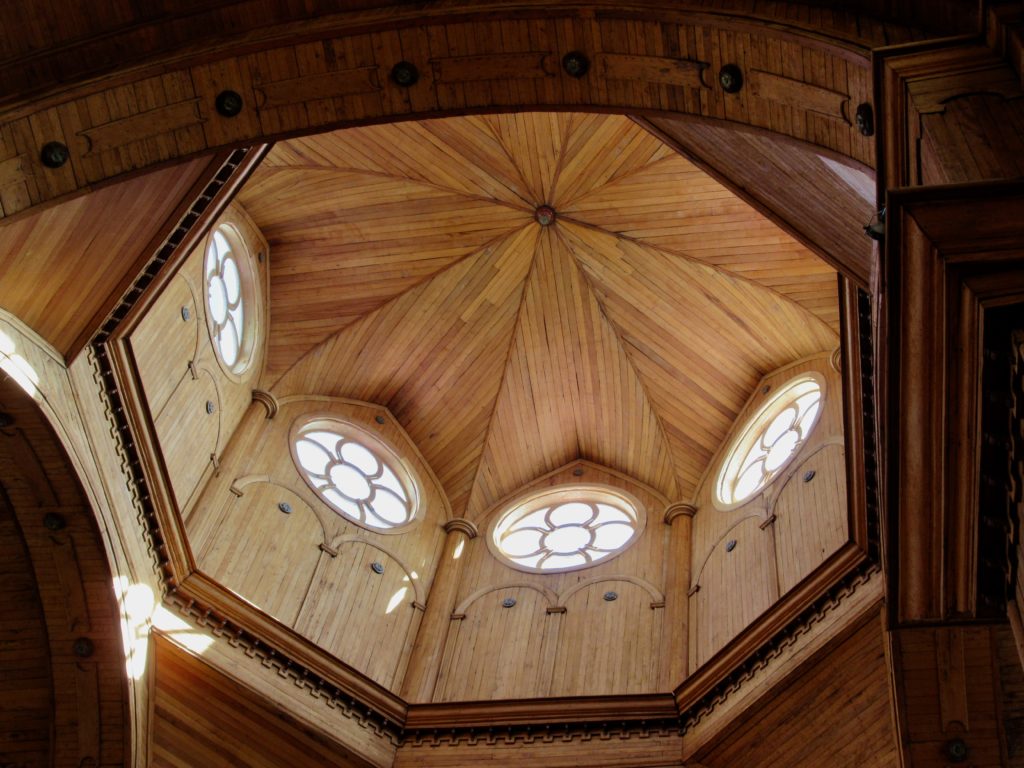
Even having taken an extra day for our “one day” tour, we regret not having more time to appreciate the talent of the master builders and foresight of the religious leaders who created these special places.
Quest completed, but there is still so much more to learn about the churches of Chiloé.
When You Go
You can find more information about the churches of Chiloé by visiting the UNESCO World Heritage listing here.
Looking for more South American travel adventures? Check out these posts:
Dreaming of Travel to Easter Island
Gearing Up for the Galapagos Islands: Finally!
All Aboard for Lizard Land in the Galapagos
Tortoise Time in the Galapagos



Just my sort of sightseeing. If you liked this, you should travel in Romania. It has three groups of UNESCO listed churches: the fortified churches in Transylvania, the painted churches in Moldavia, and the wooden churches in Maramures. And, just like you, I wanted to see ALL of them!
Appreciate your advice, Rachel! Romania is on my radar and I will definitely be visiting it one day soon.